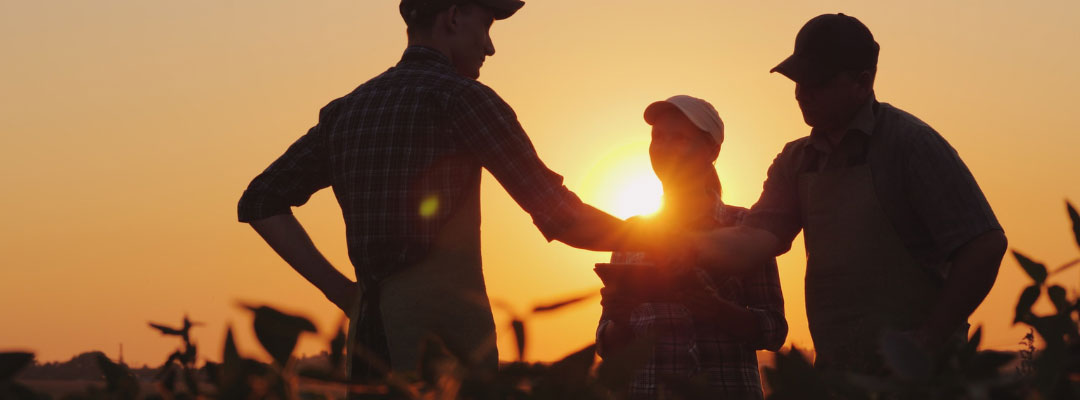Farmers and ranchers have been leasing land as a strategy to expand their operations for generations. Today, approximately 39% of farmland operated in the United States is leased, with most farmers operating a mixture of leased and owned land (Bigelow 2016). Leasing farmland is also an affordable way for young and beginning farmers to get started and gain economies of scale in a capital-intensive business where they may not have enough money to buy farmland early in their careers (Katchova and Ahearn, 2016).
While advantageous from a financial standpoint, the actual process of getting in touch with landowners and developing relationships with them can be a daunting task. Many young farmers develop a relationship with a landowner through parents and grandparents, who facilitate “handing down the farm” from one generation to another within the leasing relationship. Other young and beginning farmers contact potential landowners directly and propose to build a business relationship that starts from scratch.
The most common claim that young and beginning farmers make about entering the land leasing market is that it is all about being price competitive. In other words, you have to have the highest bid to win over a landowner. But that turns out to be only part of the picture. Information gathered from talking to landowners in focus groups about their preferences for leasing their land suggests that many are interested in helping the next generation of farmers and are just looking for the right fit.
As a complementary strategy to being competitive with their lease bids, farmers must consider marketing themselves as a quality tenant to landowners. One way to do that is by building a resume with your farming credentials presented in a professional way (see example). Resumes should include personal and business references, farming experience, and your farming philosophy (e.g., conservation practices you want to employ, and improvements you could contribute to the land). Presenting a resume to the landowner as part of your negotiation strategy could be the effort that makes the leasing relationship happen.

References:
Bigelow, D., A. Borshers, and T. Hubbs. (2016) U.S. Farmland Ownership, Tenure, and Transfer. Economic Research Service, Bulletin Number 161.
Katchova, A. L, & Ahearn, M.C. (2016). Dynamics of Farmland Ownership and Leasing: Implications for Young and Beginning Farmers. Applied Economic Perspectives and Policy, 38(2), 334-350.
Arnold, Chelsea J., and Mykel R. Taylor. “Farmland Leasing for Young and Beginning Operators.” Southern Ag Today 2(37.3). September 7, 2022. Permalink


